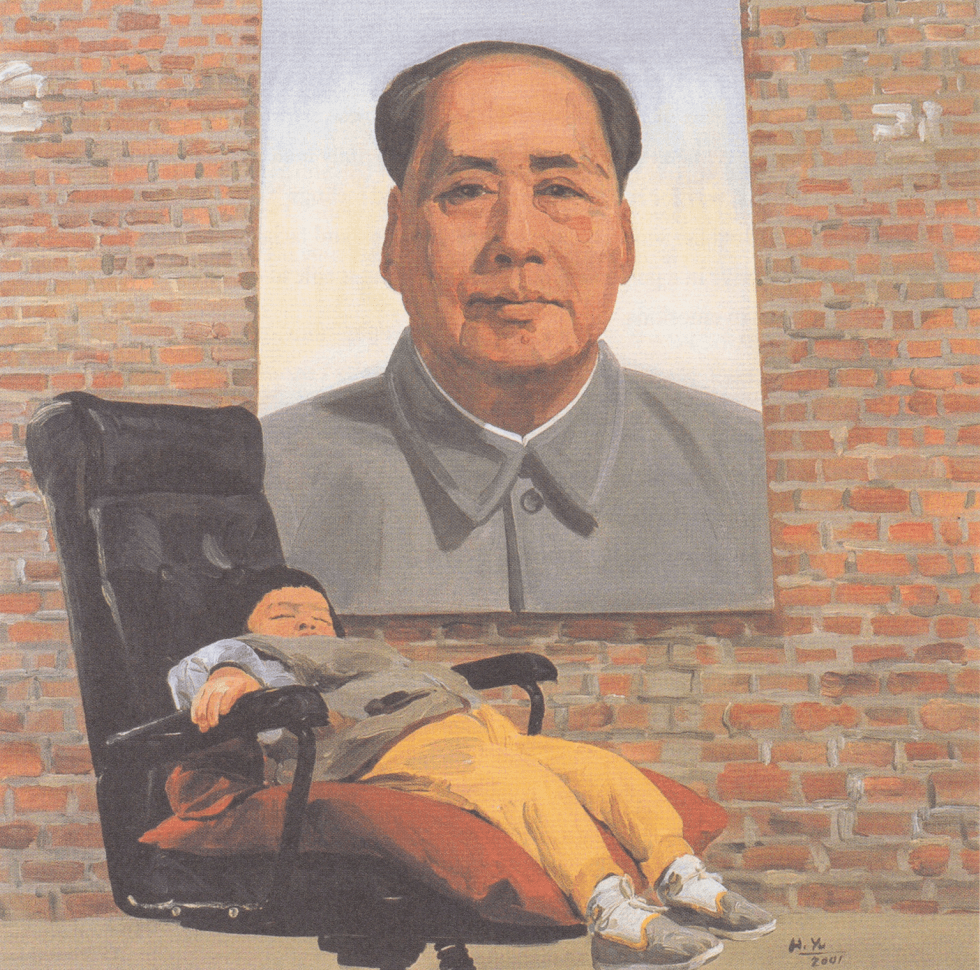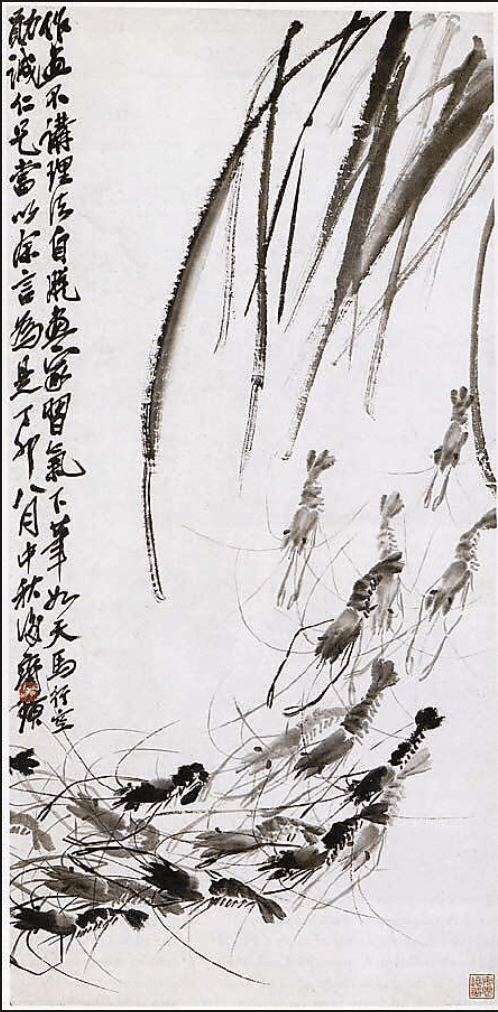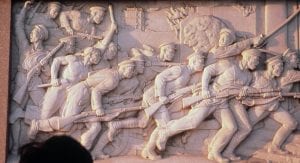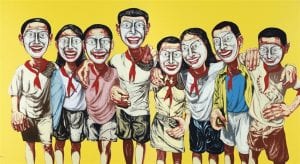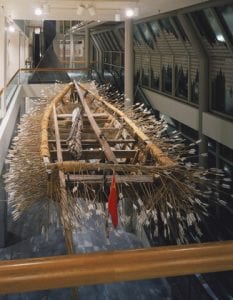
Pan Yuliang, Ode to Spring, 1930, Oil on Canvas, Collection of Anhui Museum, 98 x 71 cm. Source: Teo 2016, 60 (Figure 2.9).

Sandro Botticelli, The Birth of Venus, tempera on canvas, c. 1482. Galleria degli Uffizi (Florence, Italy). Image source: Artstor Digital Library
Pan Yuliang’s Ode to Spring, an oil on canvas created in 1930, embodies themes of female empowerment and comradery with an infusion of Western art, taking inspiration from Renaissance painters as well as the French impressionists. After receiving an education at the École Nationale Supérierure des Beaux-Arts in Paris, Pan was inherently exposed to the romantic traditions of the western painters. By using oil paint on canvas to produce the 98 x 71 cm spanning work, Pan pays tribute to the past impressionists as oil on canvas was the main medium of painters like Matisse, Manet, and Monet.
Pan’s image centers around a standing nude female surrounded my five seated women in an ideal natural setting. By employing atmospheric perspective, the viewer feels as if they are in a paradise; one woman in the background playing the flute as another reads a book. Seated to the left of the standing figure are two women engaging in conversation. The standing nude female holds a dove similar to the woman on the right. The centered female is merely covered by a thin drapery. With wispy trees and falling leaves, the natural background mirrors the curves of the women’s bodies. The placement of the nude females unified in a natural setting, signifies that “women are allied more closely to the realm of nature than culture”(Teo 2016, 60). This point if furthered by Phyllis Teo, an art historian from Singapore, elaborating that “Pan’s paintings transmit an allegory of modern women’s desire for autonomy and access to a public sphere, as signified by the outdoor setting, where women could freely pursue knowledge, music and art”(Teo 2016,61). As women formerly had little to no access to an education, Pan’s work emulates an ideal society where women can pursue intellectual desires free from the grip of patriarchal authority.
Teo puts this piece in comparison with the infamous Birth of Venus by Sandro Botticelli, alluding Venus’s stance being similar to that of the centered nude female in Pan’s work. However, what makes these two pieces so different is the difference in actions of the surrounding individuals. While the figures in Botticelli’s work attempt to cover up the nude female, Pan’s figures are on display just as much as the center figure. This public and natural display of the female form adds to the overtones of female comradery, education, and representation in society.
Bibliography
Teo, Phyllis. Rewriting Modernism: Three Women Artists in Twentieth-Century China: Pan Yuliang, Nie Ou, and Yin Xiuzhen. Chicago: Leiden University Press, 2016.
Sandro Botticelli. c. 1482. Birth of Venus. paintings. Place: Florence, Galleria degli Uffizi. https://library.artstor.org/asset/SCALA_ARCHIVES_1031314669.

